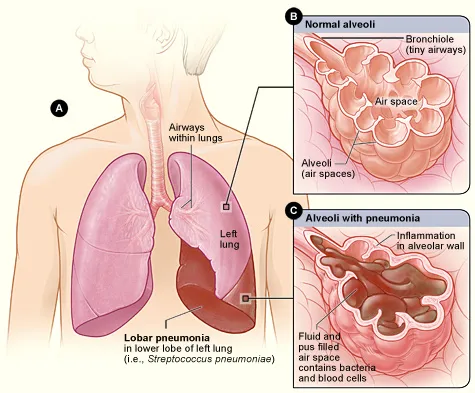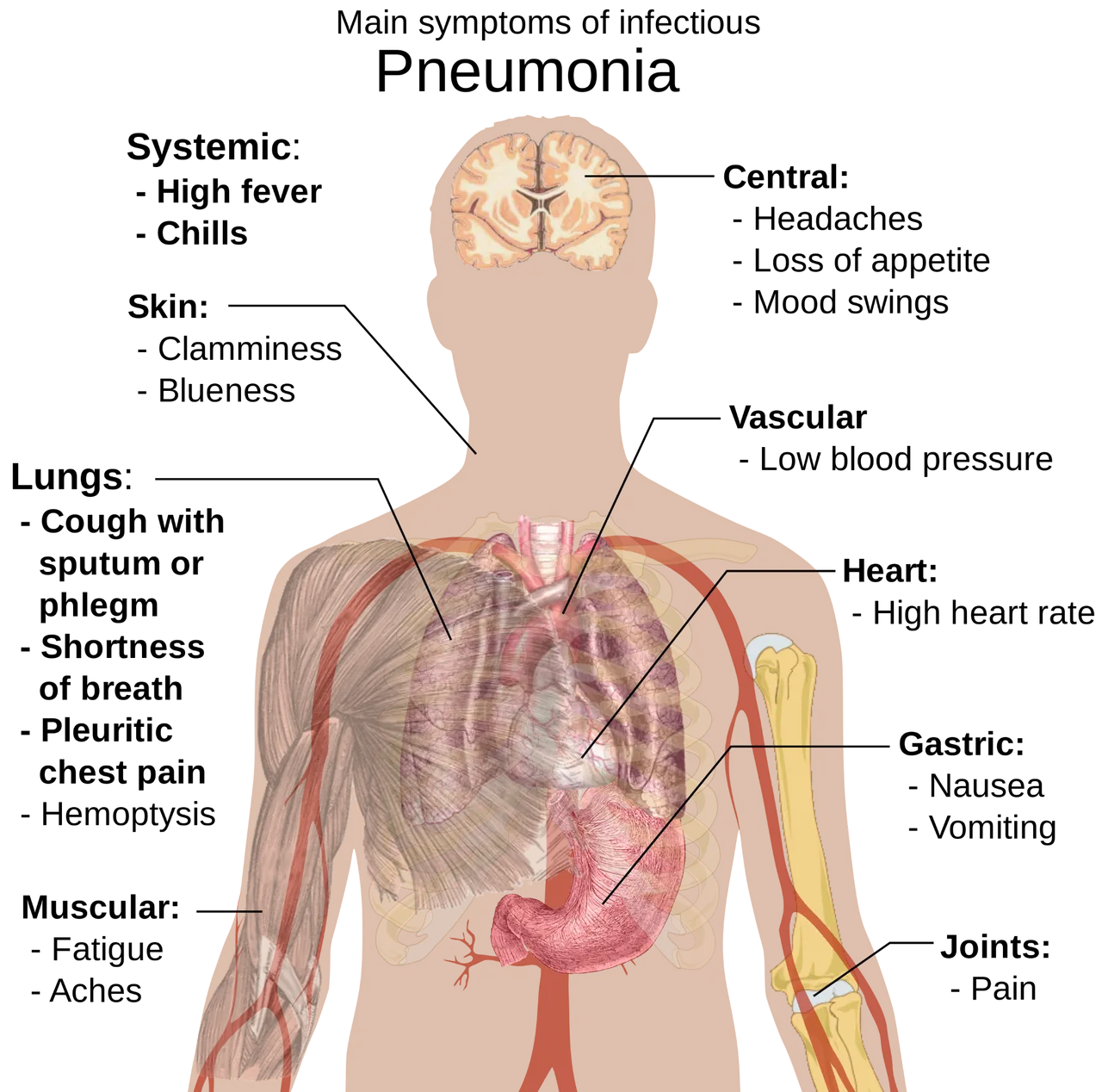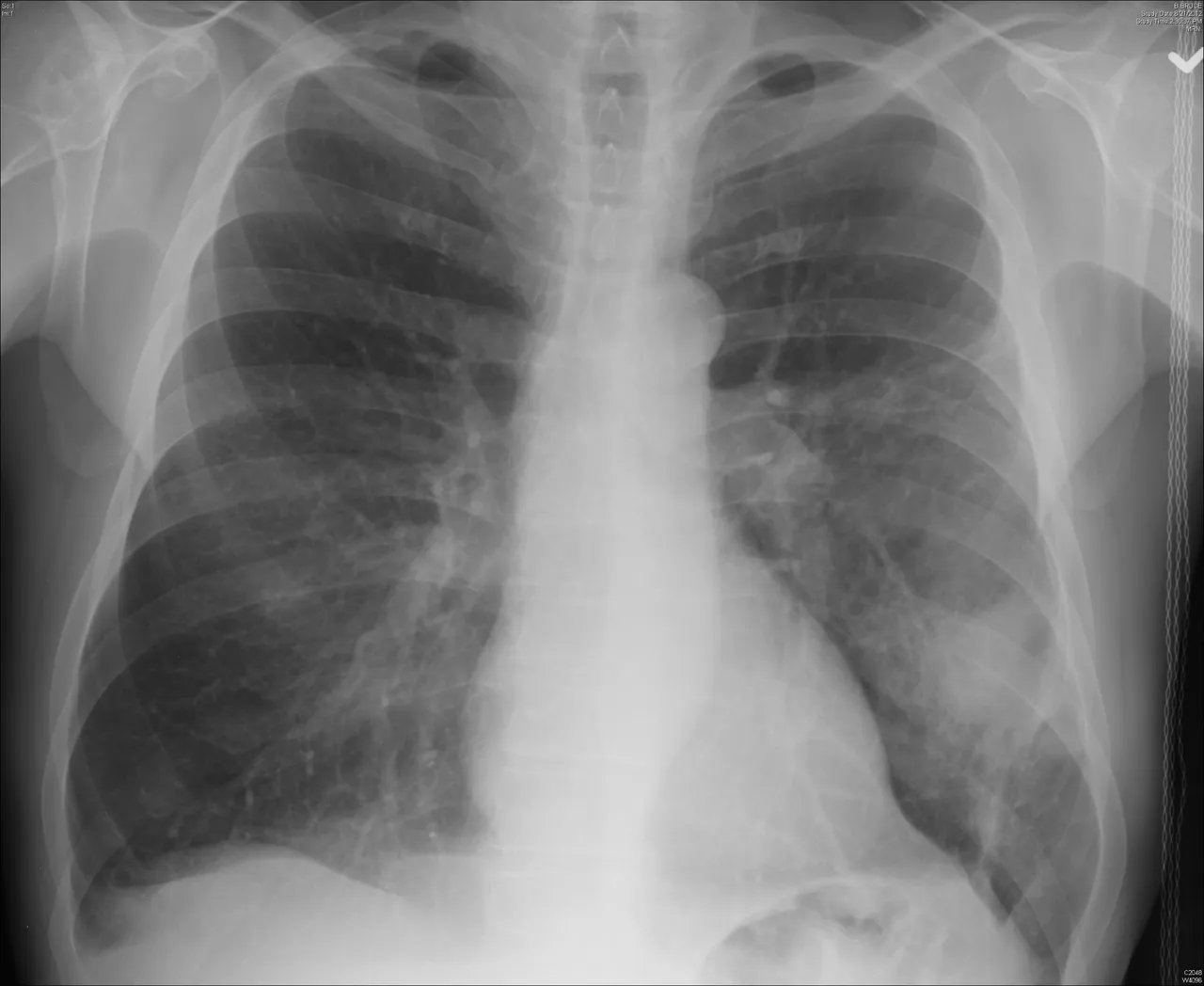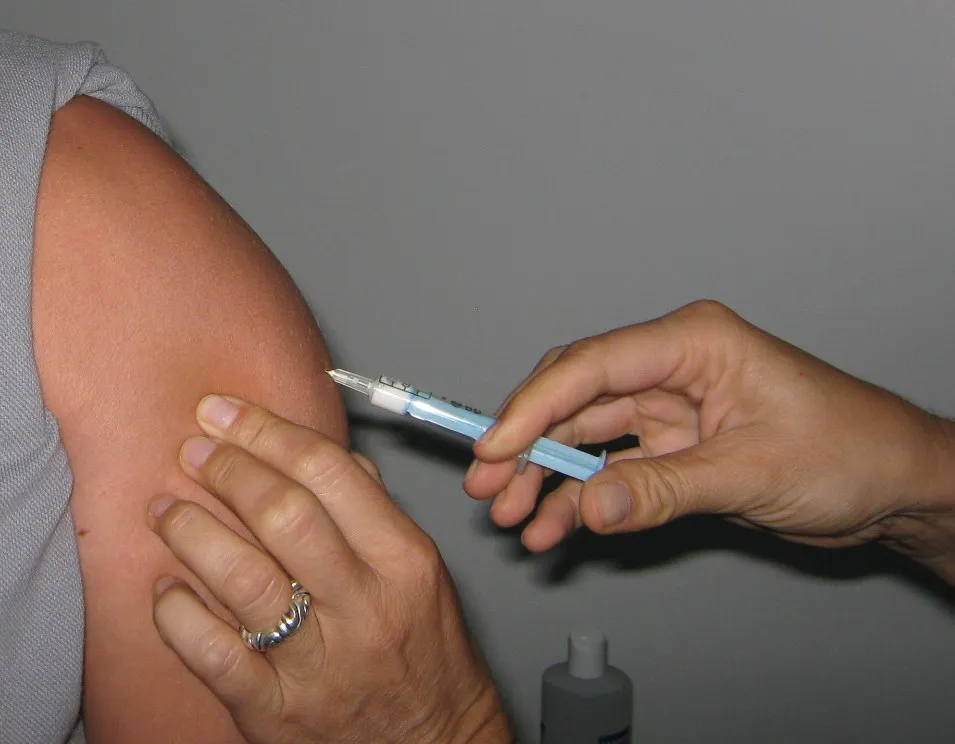
By Yale Rosen from USA, CC BY-SA 2.0, Wikimedia
Pneumonia generally can be grouped into Community-acquired pneumonia and Nosocomial Pneumonia. Nosocomial pneumonia generally refers to the type of pneumonia associated with the hospital and health care facilities while community-acquired pneumonia is a sudden infection of the lung parenchyma which occurs in persons who have not had a hospital admission or stay in a long-term care facility for 14 days and above before the onset of symptoms. In this discussion, we will focus on Community-Acquired Pneumonia (CAP).
This disease is predominantly caused by a bacterial called Streptococcus Pneumoniae and this is the commonest cause globally. However other bacteria have also been found to cause this disease which includes the typical bacteria (Haemophilus influenza, Moraxella catarrhalis, Staphylococcus aureus, etc) and the atypical bacteria (mycoplasma pneumoniae, chlamydia pneumoniae, legionella Spp, etc.)
Viral causes of community-acquired pneumonia include respiratory syncytial virus, influenza A and B virus, SARS-CoV-2 virus, etc.
For those whose natural body defense is weak (immunocompromised) like those with HIV, malnutrition, chronic use of some drugs like corticosteroids, fungal causes are common and may include pneumocystis jirovecii pneumonia (PCP).

By Heart,Lung and Blood Institute, Public Domain, Wikimedia
HOW COMMON IS THIS DISEASE
Globally, pneumonia killed more than 740,000 children younger than 5 years old in 2019. This is greater than the number of deaths from any infectious disease, such as HIV infection, malaria, or tuberculosis.
CDC data show more than 47,000 people died from pneumonia in the United States during 2020
WHO ARE THOSE AT RISK OF BEING INFECTED BY THESE MICROORGANISMS
Pneumonia can affect all age groups, but some persons are more at risk than others. Some of these risk factors that we need to know are as follows;
Age: This disease affects more children below 5 years of age and elderly above 65 years of age. This is because these age groups don't have strong immunity to fight these organisms. So it's easy for them to enter and cause damage to the lungs.
Patients who have other respiratory diseases like asthma and Chronic Obstructive Pulmonary Disease (COPD) are at increased risk of developing this community-acquired pneumonia.
Immunocompromised individuals: Those who have weak immune systems are at more risk of getting this disease because they don't have a strong immunity to win the fight against these invading organisms.
Smoking: Individuals who smoke are more at risk of getting community-acquired pneumonia. This is because smoking destroys the lungs and impairs the lung's ability to fight off infections.
Those in institutionalized homes, low-income environments, old age homes, etc are also more at risk of getting community-acquired pneumonia.
Other risk factors include aspiration of stomach contents into the lungs, obesity, dementia, alcohol use, heart disease, stroke, etc.

By Mikael Häggström, Public Domain, Wikimedia
HOW DOES THIS INFECTION OCCUR
This disease can arise from the entrance of these microorganisms into the lungs through aerosols or droplets from an infected person. It can also be from an overgrowth of resident microorganisms in the lungs.
These microorganisms invade the lung parenchyma and start multiplying which triggers the immune response of the individual. This multiplication of the organism and the activation of the body's defense mechanism causes inflammation and damage to the lung parenchyma which results in pneumonia and as it advances, the symptoms will start manifesting.
CLINICAL MANIFESTATIONS
Once this damage to the lung tissues results, the patient will develop a cough which may or may not produce sputum. There will also be breathlessness and chest pain that worsens when the patient breathes, sneezes, or coughs. Due to the ongoing infective process, there will also be fever and in severe cases, there may be the presence of microorganisms in the blood (sepsis) which will result in an increased heartbeat, low blood pressure, and features of shock. There is also tiredness and a general feeling of unwell. There can be other atypical manifestations that affect virtually all systems of the body.
INVESTIGATIONS AND TREATMENT
The diagnosis of community-acquired pneumonia cannot be made with only the signs and symptoms because many other diseases cause similar signs and symptoms. An important investigation is a chest radiograph which shows the presence of acute infiltrates from the accumulation of white blood cells and fluid in the alveolar spaces.

By Yale Rosen from USA, CC BY-SA 2.0, Wikimedia
Other important investigations include sputum gram stain and culture, blood culture, oxygen saturation, complete blood count, BUN, etc.
Once the diagnosis is made, the next step is to assess the severity of the disease which will help in the choice of treatment.
For mild cases, they can be managed from their homes without the need to be admitted to the hospital. For moderate cases, there is a need for admission to the medical ward for proper and urgent treatment. Severe cases where there is sepsis and respiratory distress are managed in the Intensive Care Unit where a high level of care is instituted.
The treatment of community-acquired pneumonia is by the use of Antibiotics and short-course therapy is advocated using the right drugs, at the right dose, and for the right duration.
The Antibiotics commonly used are amoxicillin, macrolides, doxycycline, fluoroquinolones, cephalosporins, etc depending on the clinical state and severity. The normal duration of treatment is about 5-7 days or 7 - 10 days in severe cases.
PREVENTION
This disease is very preventable using vaccines. The vaccines used here are the influenza vaccines and pneumococcal vaccines.

By Grook Da Oger - Own work, CC BY-SA 3.0, Wikimedia
Adequate nutrition is also important which helps to boost our immunity. Cessation of smoking, regular hand washing, and avoiding overcrowded places are also very important preventive measures.
In conclusion, community-acquired pneumonia is a common disease that can lead to severe impairment of the quality of life or even death. Contrary to some beliefs that pneumonia is caused by cold, this disease is caused by microorganisms that cause inflammatory damage to the lungs.
Early detection and prompt treatment are very important, therefore, anyone who notices difficulty in breathing, cough, fever, and chest pain should see a doctor immediately for proper evaluation.
This disease is preventable through vaccines and we must make sure that we are under this vaccine coverage to fully protect ourselves.


For references and further reading on Community-Acquired Pneumonia, please kindly check the materials below: